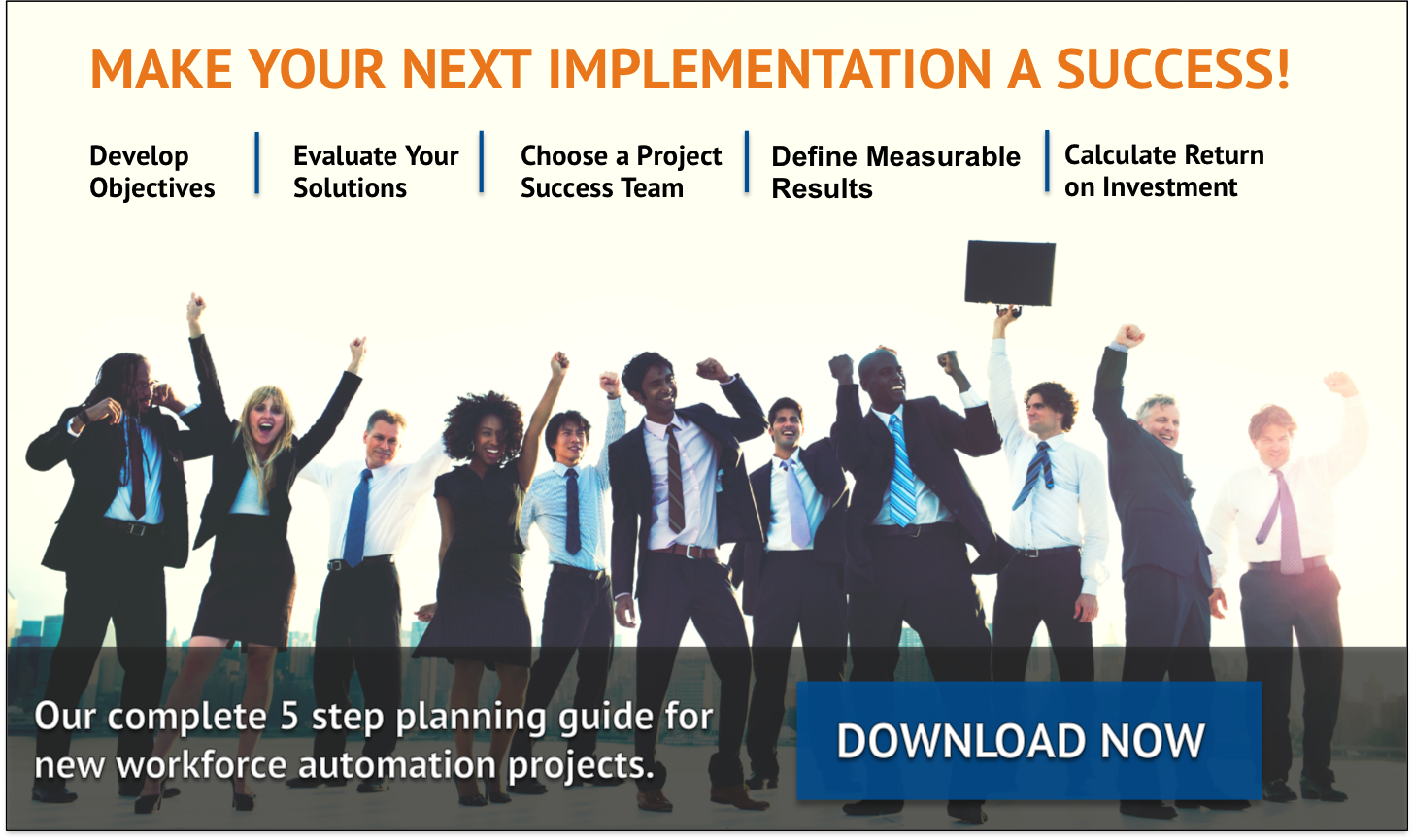
Regardless of business size, industry, strategy or mission statement, organizers today need to control costs and respond to their market and the expectations of their customers, employees and owners. When these challenges are not effectively addressed, profitability is at risk. However, with the right solutions and an eye for strategy, workforce management technology can help provide useful insight and analysis tools for any organization.
The most effective solutions are holistic, offering a coherent blend of technology and services seamlessly integrated to support efficient administrative services and effective workforce management. Individual point solutions can contribute significant benefits in their own right; however, integrated solutions that enable a multi-pronged approach will result not only in short-term cost savings, but also will allow your company to take a step beyond day-to-day dollars into long-term planning and strategy. The result is reduced overall costs, improved employee retention, increased productivity and more time to focus on tasks that improve your bottom line.
This post discusses how workforce management technology can improve business practices for any industry.
Reducing Labor Costs
Labor expense is usually the single largest expense category for an organization, regardless of size, structure or industry. Through automation and real-time reporting, companies can minimize productivity loss and reduce unnecessary overtime by managing employees’ schedules more effectively.
There are numerous tools and services available to reduce unnecessary labor expenses in a number of ways that can impact both short and long-term bottom line. To see measurable savings, organizations must focus on the time required to support a particular process or activity, and the dollars you pay for that time.
Some of these savings are easy to quantify:
- Increase Employee Productivity
- Reduce manager's time spent administering employee-related activities
- Enable employees with 24x7 access to information such as payroll and benefits.
In addition to the hard-dollar savings of reduced labor costs, the same solutions that minimize day-to-day operational expenses can also bring tremendous strategic value to the organization. With better planning of labor expenses, organizations can expect improved financial forecasting through an improved ability to compare labor budgets to actual labor expense, and better pricing through improved knowledge of the labor components of product costing.
Reduce Administrative Costs
Workforce management technology can help to reduce the time it takes administrative staff to manage basic activities that can be automated, including (but not limited to) the following:
- Tracking and reporting for absences
- Processing time cards, paychecks
- Auditing of expense reports
- Answering employee inquiries related to time off, benefits, and payroll
Improve Employee Retention
Every business, regardless of industry, seeks to find and retain the best possible employees for its workforce. That being said, every organization should ensure that it identifies candidates who meet the businesses' needs, makes effective use of those employees and their valued skills, and manages basic workforce administration activities in a way that makes it easy for those employees to stay on board. Although it's difficult to quantify, unwanted and unavoidable turnover comes at a high cost to an organization.
Consider the costs involved with hiring a replacement worker:
- Cost of attracting applicants
- Time spent sorting through resumes
- Cost of entrance interviews (recruiter and manager's time)
- Cost of testing (if applicable)
- Post-hire information gathering (setting up records)
Note: This doesn’t begin to take into consideration the cost involved with training a new employee.
For more information on implementing WMT automation, click here for our free Planning Guide for New Automation Projects.




